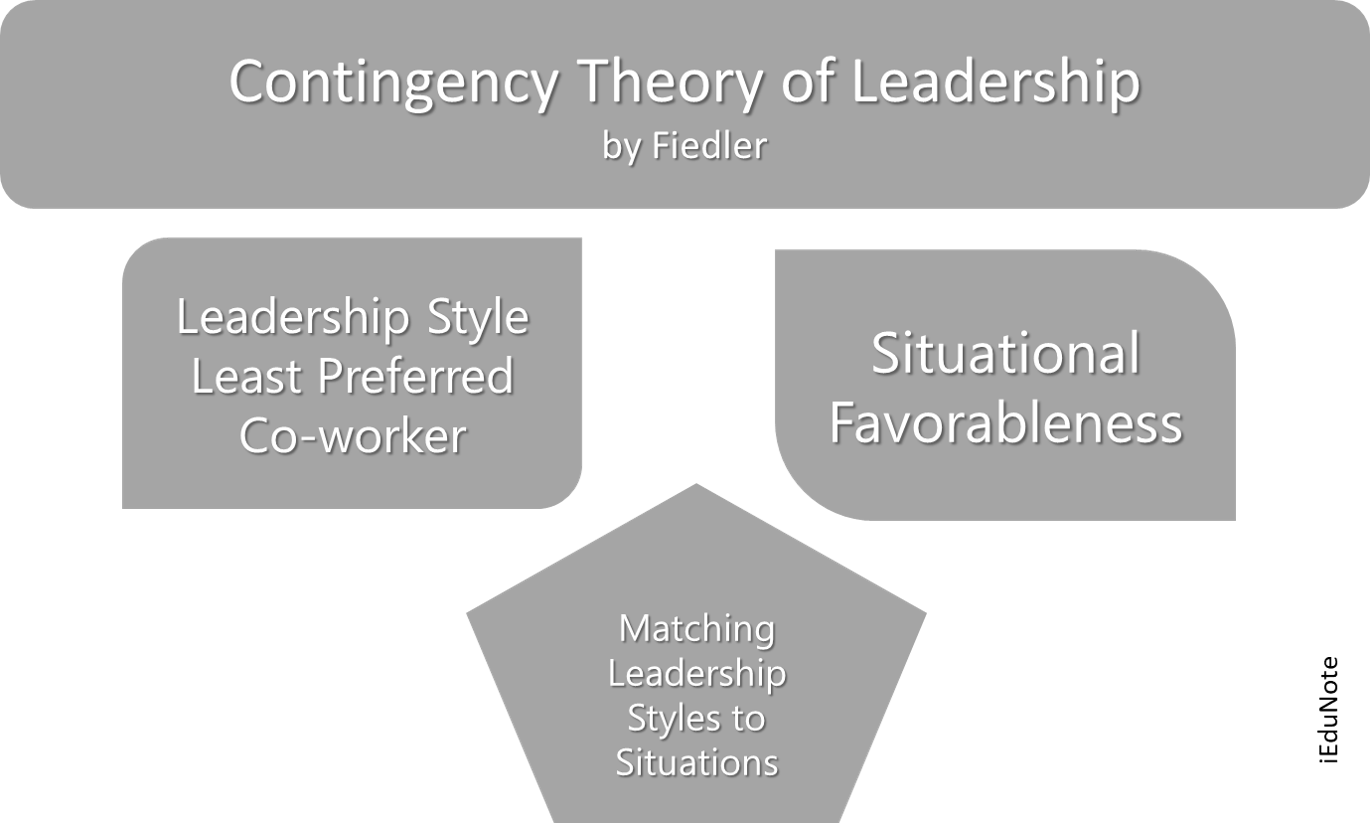Fiedler’s Contingency Theory of leadership holds that people become leaders because of their qualities, various situational factors, and interactions between group members and the leader.
This model also explains a relationship between leadership style and the favorableness of a situation.
The contingency theory of leadership holds that people become leaders not only because of their qualities but also because of various situational factors.
Fiedler’s contingency theory of leadership explains the 3 elements affecting the relationship between leadership style and situation favorableness.
Fiedler described situational favorableness in terms of 3 dimensions;
- the leader and member relationship,
- the degree of task structure, and
- the leader’s position of power.
If the three dimensions are high, the situation can be favorable. If the three dimensions are low, the situation in combination with leadership style determines effectiveness.

A human relations-oriented manager/leader is effective in the intermediate range of favorableness. In very favorable and very unfavorable situations, task-oriented leadership is effective.
This theory is criticized for its deficiencies like a narrow focus on a single leader trait (task or relations orientations), ambiguity in the measurement of terms of the model, and lack of explanatory process.
Fiedler proposed a new theory based on empirical research called the cognitive resource theory.
He identified the situations under which the leader’s cognitive resources, namely intelligence, experience, and technical expertise, contribute to group performance.

![Leadership: Definition, Nature, Styles [Comprehensive Guide] 2 Leadership: Definition, Nature, Styles [Comprehensive Guide]](https://www.iedunote.com/img/1033/leadership.jpg)